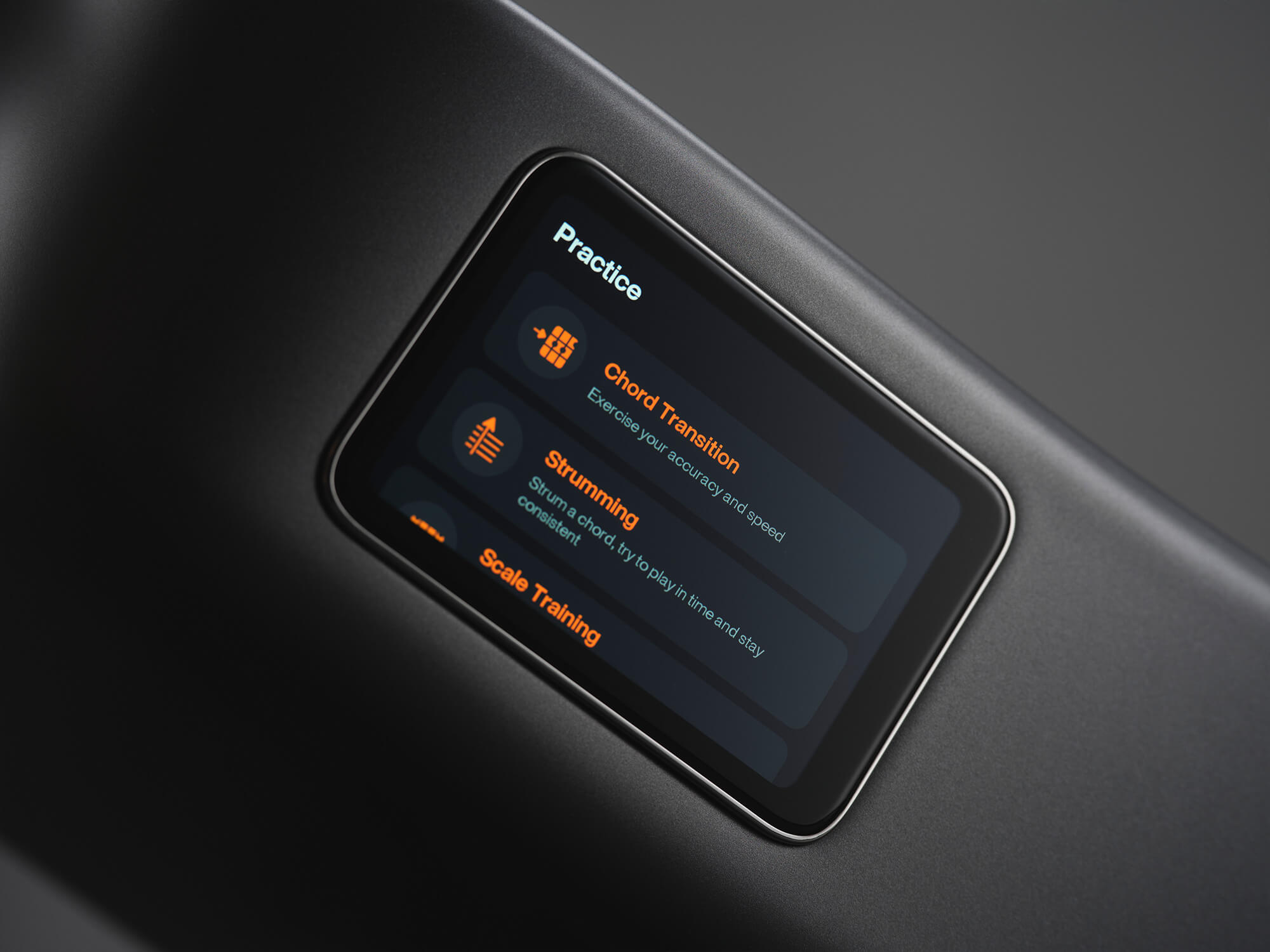Related Tags
Can a smart guitar make you better at improvisation?
The LAVA ME 3’s smart features are much more than just loopers and effects – they can make you a better guitarist.

Ad Feature with LAVA MUSIC
In the guitar space, it’s fairly well-accepted that technology has enabled a wealth of new ways to learn, on-boarding many more players to the instrument – and helping countless others hone their skills. Things like readily-accessible video tutorials to fully-notated smart tabs have made progressing on the guitar much easier for players of all levels.
But why stop there? Why not bring even more tech to the instrument itself? One guitar pushing things forward in that regard is the LAVA ME 3, a carbon-fibre acoustic that’s packed with smart features.
The on-board HILAVA operating system, controlled by a familiar touchscreen, offers a lot more functionality than the average acoustic: looping, effects and drum samples are all just a few taps away. And, most importantly for our purposes, there are plenty of ways the LAVA ME 3 can actively support your learning.
To give you an idea of its potential, let’s explore just how it can help us hone our skills when it comes to improvisation.
Getting a scale down
Improvising solos is based around scales – and, yes, if you really want to, you can break out of these predefined sets of notes for some interesting harmonic effects. But as the saying goes, you’ve got to learn the rules before you break them. So let’s learn to walk before we learn to play free jazz, and get our chops around a scale, shall we?
From the LAVA ME 3’s menu, heading to practice opens up a selection of learning tools, which can teach everything from strumming in time to picking out notes by ear. But for our purposes, we want to open Scale Training: this allows us to choose a scale and, importantly, the position we want to learn it in.
Learning scales in different positions can really help level up your improvisation: changing position really adds a sense of movement to solos, rather than trapping them in a single box across just a few frets. It’s like chord voicings: cowboy chords are all well and good, but sometimes a song will call for an inversion higher up the fretboard.
Having chosen our scale and position, the touchscreen now presents us with a real-time display of what notes we’re playing – not just within the scale, but its actual note name as well. This is incredibly useful, no matter your level of music theory knowledge.
From here, we could just start running up and down the scale – but it’s also good to practise in time, so we don’t get too used to not thinking about counting. Luckily for any drummers we play with, the Scale Practice app offers a metronome at just a single tap. Its volume is easily adjusted with a control inside the LAVA ME 3’s soundhole.
Getting into actually running up and down the scale, the true benefit of the real-time feedback becomes clear – we can build up combos as we keep playing well, and the app can give us reports on our accuracy once we’ve finished with our session. What better motivator is there than trying to beat your own high-score?
Putting a scale into context
Now we have a better feel for – and understanding of – our scale – it’s time to get improvising. From the main menu we can load up a looper, and record ourselves playing a simple I-V-VI-IV chord progression to start soloing over. If we weren’t feeling confident in our ability to put a loop like this down, we could of course just head back to the practice area to work on our changes until we were!
With the loop playing, it’ll keep going indefinitely – but we can always go back and record something else if we’re getting tired of the same progression. But from here, we’re free to put that muscle memory we’ve built up into practice: working out licks, and getting a feel for how certain notes in a scale work over each chord.

If some simple strumming isn’t quite what we want to practise to, there’s also the on-board drum loops. These cover a range of styles, so no matter if we’re prepping for a jazz, pop or rock gig, we’ll be ready to go.
And on the guitar side of things, we can always add some of the on-board effects to the loop to sonically separate our soloing from our chord work – whether you want to play over some reverb-drenched guitar, or even some octave-down bass parts, there’s a load of different ways to change up the sound. Practice shouldn’t have to be boring, and changing it up will help keep us engaged, and coming back to improve more!
Smart player, Smarter guitar?
There are loads of cool things about the LAVA ME 3, of course. The effects are much more than just a novelty, and the way the learning apps offer real-time feedback keeps things engaging and fun.
But perhaps the coolest thing is the ease with which we could get right into practicing. We didn’t need to plug in a looper pedal, dig through a drawer to find the right USB cable for our audio interface or even open up a laptop at all – all the features we needed were just right there!
And while the supporting smartphone app does allow you to access some extra features like sharing loops on the cloud, the LAVA ME 3 works just fine without it, so you can leave your phone in the other room. And let’s just say, not having the temptation to start to scroll down TikTok certainly helps with a focused practice session!
